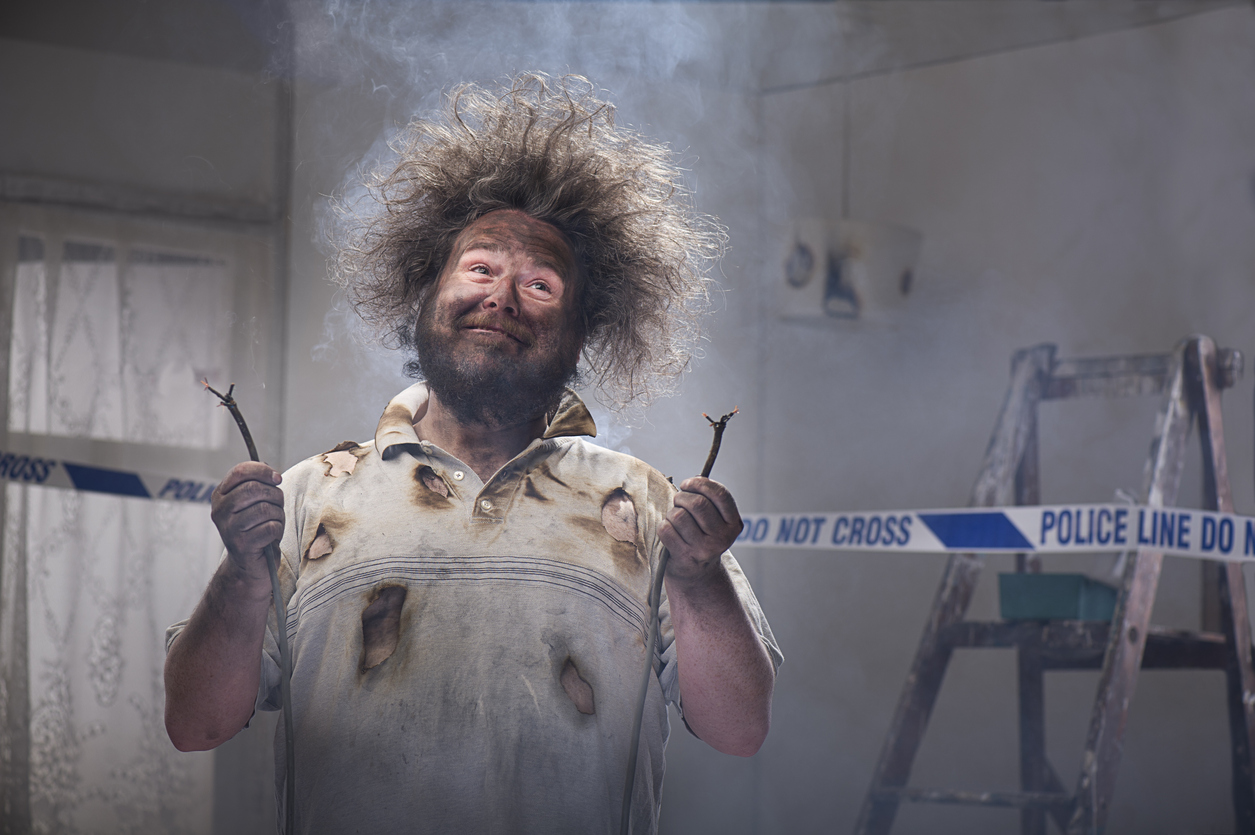
When it comes time to sell the house, homeowners sometimes opt for DIY fixes hoping to save on costs and increase sales prices. Sadly, many of these common DIY projects go very wrong and contractors have to pick up the slack.
Badly done DIY projects can actually devalue homes as prospective buyers simply add each item to the list of reasons they need a discount. Poorly executed plumbing and electrical jobs may result in expensive repairs to bring the house up to code.
If you are going to attempt a DIY repair, ensure that all work is in compliance with local building codes. Have your work inspected and keep documentation of inspections for prospective buyers.
Inspections Aren’t Quality Control
Prospective buyers should note that inspections aren’t an indication of quality of workmanship. For example, an inspector will see a bathroom project when the walls are still open so that the plumbing and wiring can be inspected.
After this stage, the walls need to be closed in and water-resistant coverings need to be installed. If grout is not properly installed, or joints aren’t properly sealed, water can seep into walls and under flooring causing structural damage, mold and mildew. DIY projects are at much greater risk of mistakes than those done by professionals.
YouTube Videos Are Not Training
Many DIY enthusiasts will watch a YouTube video and assume they can complete tasks on their own. Sadly, many YouTube “experts” will lead you astray. Each manufacturer has its own installation requirements, so the sink your expert is installing on YouTube may be different to the one you are using at home and this may cause unforeseen problems. For example, sink installation requires hot water on the left and cold on the right, but when you are on your back underneath the sink, they look backwards.
If you are going to follow a YouTube video, make sure that they are using the exact same component you are using. Many manufacturers have their own YouTube channels with videos for the exact model you have. Use these videos and follow the manufacturer’s instruction to the letter. If you don’t have this option, check with several sources to make sure they all give you the same advice. When in doubt, call a pro.
Don’t Cover Up The Damp
Basements can be the bane of home buyers. Covering damp issues with new drywall and a lick of paint won’t fool anyone and you’re creating a culture of distrust. Instead, get professionals in to resolve the damp problems and then you can take care of the cosmetics to save money. Showing that you have resolved these issues will ease the minds of prospective buyers.
Proper Ventilation
Do not vent exhaust fans and dryers into the attic, garages or wall spaces. Vent them outside. Pumping warm, moist air into these enclosures will result in mold, mildew and (eventually) structural damage.
Vents on the roof may require professional attention to ensure they don’t leak. Always check you’re using the right filters and attachments for your heating and cooling systems. Manufacturer’s installation videos and instructions will help you here.
Focus on What Matters
DIY enthusiasts will often focus on cosmetic fixes to spruce up their place. Sadly, everyone’s tastes are different so your newly painted living room may just be added to the ‘to do’ list if the new owners don’t like the color.
Instead of focusing on these tasks, it may be better to put some money and time into the mechanics. Furnaces and air conditioners are always a priority for buyers. If they know these are new, it will work in your favor more than cosmetic changes.
Home Inspections
It may be in your best interests to get a home inspection done before placing your home on the market. This will help you to ascertain if there are things that need attention and will mean there are no nasty surprises. Being upfront with what needs to be done and even getting costs for prospective buyers can help to alleviate issues. For example, needing a roof may be a deal breaker for a buyer who isn’t aware of how much that will cost. If they know upfront, they may think it’s an acceptable risk to take on.
When it comes to home improvements, trust the professionals. Avoid cosmetic changes that aren’t generic as they may not suit your new buyer’s taste. Check out Remodelling Magazine’s Cost vs. Value study to see where your renovation dollars will earn the most dividends.
